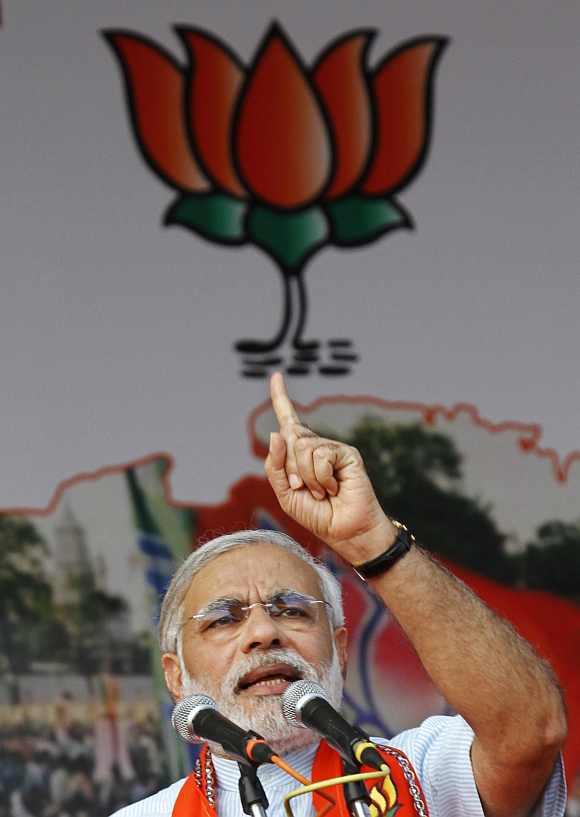
From someone who broke minority assertiveness in Gujarat to someone who eschews caste and creed for national pride -- this is how Narendra Modi bids to win over India, says Gyan Varma
Some months before the Bharatiya Janata Party’s national executive in Goa last week, the Rashtriya Swayamsevak Sangh (RSS) decided to undertake an internal exercise. It asked some of its members to evaluate Narendra Modi and his standing in BJP.
The tension between the Vishwa Hindu Parishad (VHP) and Modi in Gujarat is the Sangh family’s worst-kept secret. Several members of the Sangh in Gujarat and Modi have also clashed with each other. RSS wanted an objective evaluation of the man.
One of those who submitted a report likened the Gujarat chief minister to Angushtha in the Mahabharata. The story goes that when the Pandavas were exiled for 12 years from Indraprastha, they retired into the forest. In the course of their wanderings, they reached a place that was inhabited by a rakshasa called Angushtha. He was so known because of his size -- he was as big as a thumb. But his strength lay in the fact that he would come out at night and prey on human beings by provoking them with annoying remarks and gestures. If they got irritated, he would grow in size. When there was nobody to annoy, he would shrink to his original size.
The five Pandavas drew up a roster for guard duty at night. The first night, Yudhisthir was Angushtha’s first victim. Despite his known equanimity, Yudhisthir could not prevent himself from being drawn into a sniping match with Angushtha. The same fate befell the other Pandavas. Angushtha, meanwhile, continued to grow. Finally, it was Krishna’s turn for night duty; the five brothers warned him that Angushtha would come to irritate him as well.
Angushtha arrived on cue and began jibing at Krishna. All Krishna did was smile. The more Angushtha mocked him, the more widely Krishna smile. Angushtha began shrinking in size as his barbs drew no response from Krishna. Finally when he reached his original size, Krishna just picked him up and put him in his pocket
The next morning the Pandavas asked Krishna if Angushtha had come and plagued him. Krishna took the rakshasa out of his pocket and asked, “Is this him?” Krishna’s dismissive remark left the Pandavas wondering why they had been anxious about such a tiny problem.
It was in this rather uncomplimentary manner that the Sangh functionary likened Modi with Angushtha.
...

The Gujarat leader harboured the feeling that he was not being given his proper place in BJP. Grant him his place and he will be content -- tangle with him and let him get under your skin and he can become a big headache, the functionary counselled RSS.
The Sangh accepted the advice. Despite reservations about the growing personality cult around Modi, RSS informed the top leadership of BJP well in advance that it had decided to promote the Gujarat chief minister as the chief of BJP’s election campaign committee at the party’s 360-member national executive in Goa. This was calculated to give a clear message to the cadre as to the direction in which the party was moving. In RSS’ reckoning, if the organisation did not heed the cadres, they would simply move away from both the Sangh and BJP.
Unfortunately, the person for whom the message was specifically intended -- Lal Krishna Advani -- could not accept this. The hysteria in Goa around Modi’s elevation was witnessed by many in BJP who didn’t like what they were seeing but joined the bandwagon for fear of being left out. Each one of them shook Modi by the hand and congratulated him. The smiles were fake and quickly faded once out of sight.
In the 1980s and 1990s, Advani had evoked a similar hysteria, senior BJP leaders recalled. Ahead of Advani’s rath yatra that gathered steam from its ‘mandir wahin banayenge’ slogan, BJP workers were asked to sanctify bricks (called ramshila) and carry them to Ayodhya to build the Ram mandir. The yatra became the biggest Hindu consolidation exercise ever.
At Goa, Modi took a leaf out of Advani’s book. Making his first triumphant speech in a brilliant saffron kurta, Modi said he wanted to build a statue of Sardar Vallabhbhai Patel in Gujarat that would be twice as tall as the Statue of Liberty in New York. He asked workers to go to “every village and every constituency” in the country and collect pieces of iron from tools used by farmers so that the metal could be used in building the statue. Modi told BJP members that he wanted every farmer to be able to identify with the statue and feel that he had contributed in the making of it.
...
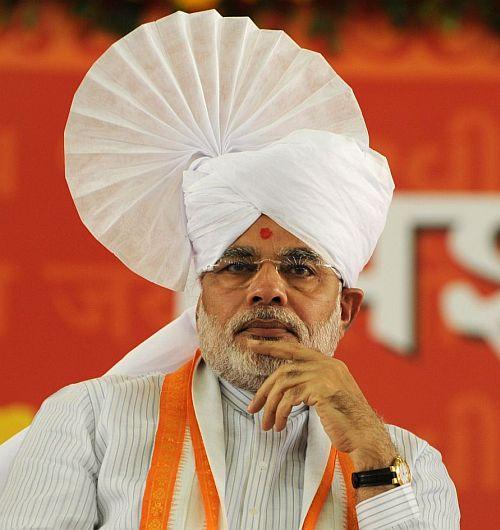
BJP leaders decided at the national executive to start a nationwide campaign from June 23, the death anniversary of Shyama Prasad Mukherjee, who founded of the Bharatiya Jana Sangh, the predecessor of BJP. It will go on till October. The campaign will comprise public meetings and rallies addressed by Modi and “other” leaders of the party.
Final touches are now being given to the campaign that will honour the “Lauh Purush”, or Iron Man, used as an honorific for Patel, with bits of iron collected from all over India. Ironically, Lauh Purush was once used to describe Advani in relation to Atal Bihari Vajpayee. And ironically, the Lauh Purush campaign will be Modi’s first as chairman of BJP’s campaign committee.
“There are deep differences in the party on Modi. Yet he was able to grow stronger both within the organisation and outside it,” said a senior BJP leader present at the Goa meeting. He attributed this to Modi’s fan following. “Why does Modi ...
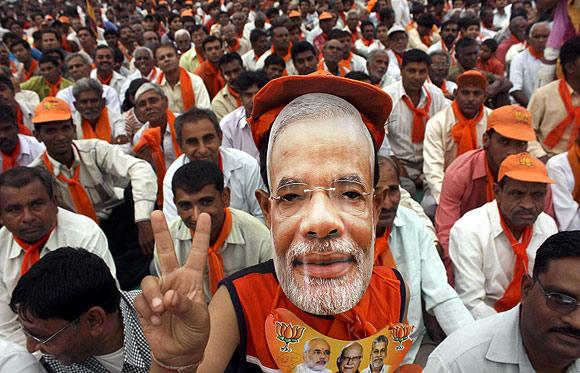
Modi, however, is resisting this route to popularity. Instead, he is talking everywhere about what he has done in Gujarat and how he wants to replicate Gujarat’s success across India. In Gujarat, talk of good governance works well because people see the changes in front of their eyes.
But elsewhere, Gujarat is only a faraway place where Modi broke the back of minority assertiveness. As a Hindutva icon, it is this persona of Modi that people want to see and hear. But if Patel will be to Modi what Lord Ram was to Advani, it may not get traction across India, Gujarat excluded.
The same goes for caste. There is a clear division within the BJP leadership on whether the party should project Modi as a leader of Other Backward Classes (OBC) -- he is a ‘Teli’ and, thus, an OBC.
While a section within the party echelon wants to capitalise on Modi’s OBC status to garner votes from that particular section of the population, Modi’s close associates have clarified that the Gujarat chief minister himself doesn’t want to play caste politics or be identified as a leader belonging to a particular caste.
Supporters of Modi in BJP point out that during the recently-concluded assembly election in Gujarat, a section in the party and RSS had tried to sabotage his prospects by identifying him as an OBC leader who was not suited to represent the voters from the Brahmin, Kshatriya and Patels communities, the dominant chunk of voters in Gujarat.
“If the party finally decides to project Modi as the leader of a particular caste then it will not only harm the Gujarat chief minister, but also the party,” says a senior BJP leader close to Modi.
...
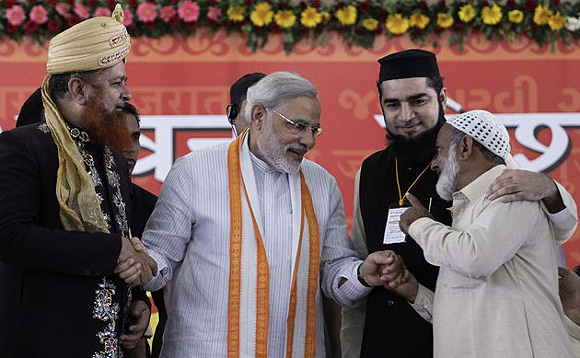
Recently, Jai Narayan Nishad, a Janata Dal (United) leader who belongs to the influential Mallah caste, organised a puja at his residence in Bihar to pray for Modi’s emergence as the prime minister in the 2014 elections. It is another matter that Bihar Chief Minister Nitish Kumar came to know of the incident and immediately demanded an explanation from the leader.
Incidents like these make senior BJP leaders indicate that Modi could be projected as an OBC leader in Uttar Pradesh, Bihar and Madhya Pradesh to increase BJP’s chances and to lure voters from castes other than the traditional voters of the party. Some senior party leaders feel that if Modi is projected as a leader of OBCs, then it will help BJP better its performance in Uttar Pradesh, where the party had won only 10 of the 80 Lok Sabha seats, and in Bihar where it got 12 out of 40 parliamentary seats.
However, this is a strategy that doesn’t have wide support. “Modi signifies development and good governance, but once we start to identify him a leader of one single caste or community, then members of other castes will feel alienated from him,” points out a senior BJP leader. He adds that it is also the policy of RSS not to identify people according to their caste in national politics.
Modi himself is scheming his own moves. He is concentrating on three issues: the crumbling credibility of the Congress, the work he has done in Gujarat, and the restoration of Indian pride. In this, he wants to circumvent divisive issues. He also doesn’t want to take challengers in his own party head on. The route to a better India, he seems to believe, lies through Gujarat.
But Modi’s Gujarat is also that part of India where the horrendous riots of 2002 occurred. His first effort will have to be to reconcile the personas of that Modi and the Modi of today.
...
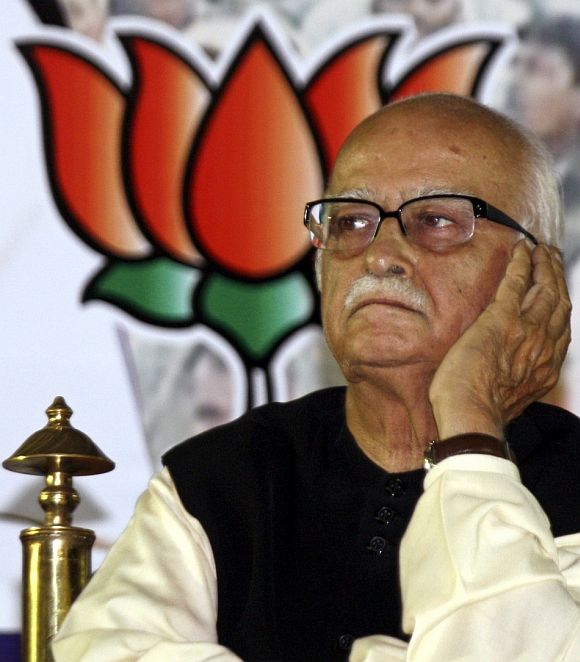
Much before Lal Krishna Advani, the seniormost leader of the Bharatiya Janata Party (BJP), decided to resign from party posts following the elevation of Narendra Modi as chairman of the party’s election campaign committee, the BJP national executive in Goa saw a tug of war among seniors to clear the path for the Gujarat chief minister.
When some senior leaders realised that Advani had not boarded the flight for Panaji, they sensed that the BJP patriarch was not ready to endorse any decision on Modi. It was for the first time that Advani hadn’t attended a national executive. Late-night confabulations were held among senior leaders to determine whether the party should go ahead with the decision to put Modi in the forefront of its electoral strategy. By all accounts, the task at hand was only about the national executive endorsing the move since RSS had clearly told the BJP leadership, including Advani, that Modi should head the campaign committee.
During the pre-Goa consultation process, RSS chief Mohan Bhagwat had spoken to Advani and told him the Sangh was of the view that Modi should be given prominence in Goa. Similarly, RSS General Secretary Suresh Joshi had also met BJP President Rajnath Singh and Murli Manohar Joshi, making it clear that Modi had Nagpur’s backing.
However, embarrassed by Advani opting out of the Goa meet, Rajnath Singh consulted party bigwigs. While Sushma Swaraj, leader of the Opposition in the Lok Sabha, M Venkaiah Naidu, former BJP president, and Ananth Kumar, BJP general secretary, were vehemently opposed to announcing Modi’s elevation in Advani’s absence, the group led by Rajnath Singh, Arun Jaitley, leader of the Opposition in the Rajya Sabha, Ram Lal, general secretary organisation, and Suresh Soni, joint general secretary of RSS, felt there was no advantage in delaying the move any further.
To further gauge the mood of prominent state leaders, including Shivraj Singh Chouhan of Madhya Pradesh, Raman Singh of Chhattisgarh, Sushil Modi, deputy chief minister of Bihar and Vasundhara Raje, Rajasthan BJP chief, Rajnath Singh and Jaitley talked to them and came to the decision that Modi’s name as campaign chief should be announced at Goa.
With the number of supporters clearly on Modi’s side, and RSS support to boot, the BJP president decided to officially declare Modi’s appointment to the post on June 9. Rajnath Singh repeated the announcement twice and stressed that it was a decision that had the support of most members.
...